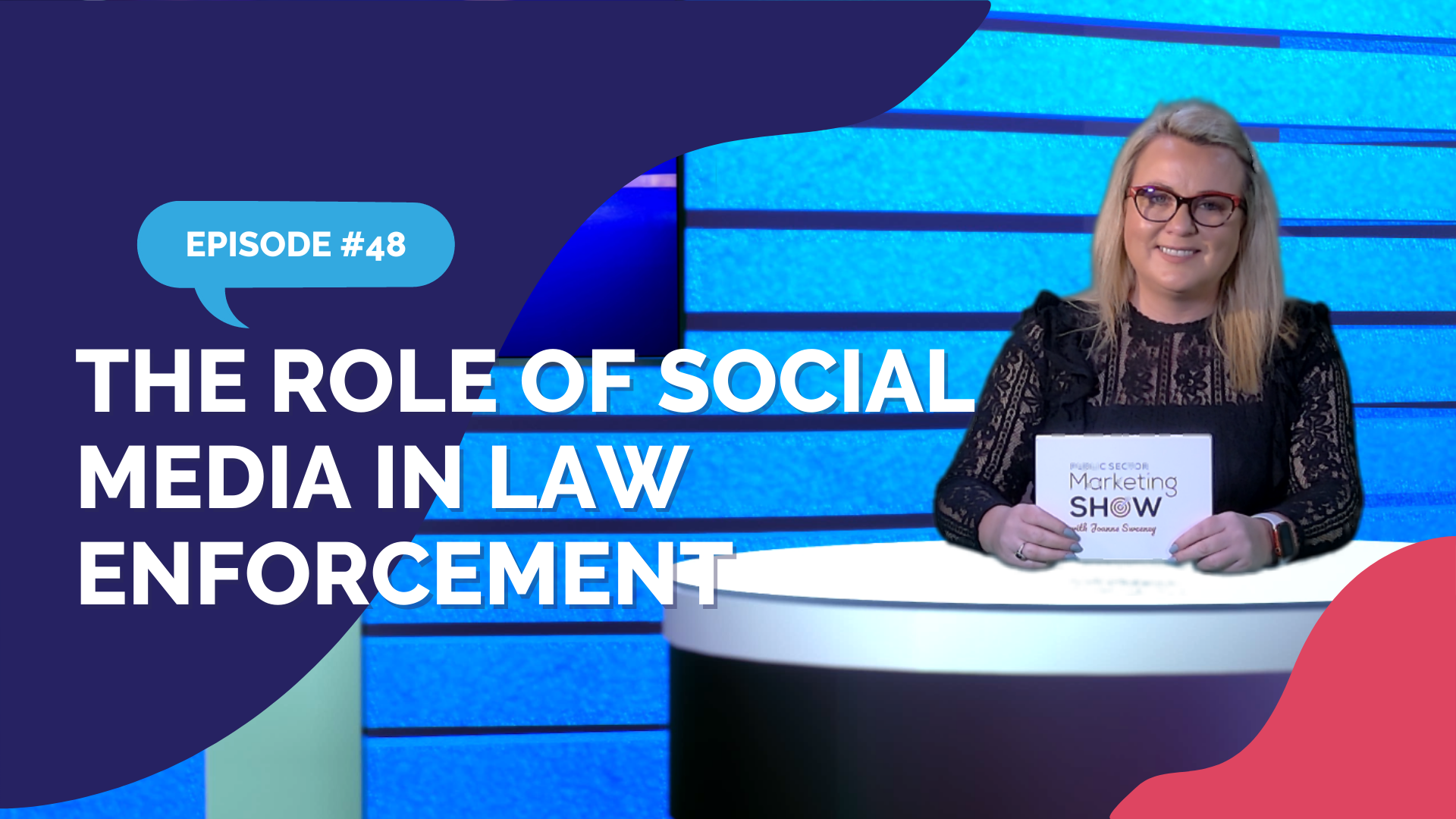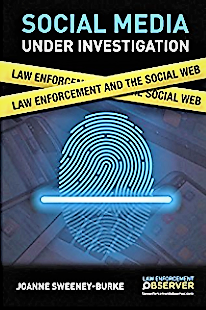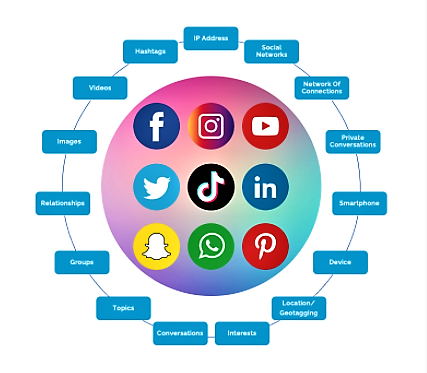
Did you know that my very first step into the public sector niche began in 2013 when I studied the role of social media in Irish police force? A background in broadcast and investigative journalism, court and tribunal reporting and a deep respect for the work of law enforcement led to an academic and practitioner journey that continues today.
In Episode 48 of the Public Sector Marketing Show, I’m sharing my knowledge in this area.
Coming up in the show.
- > How law enforcement agencies use social media
- > The research tactics used for crime investigation
- > I Interview Detective Chief Superintendent Michael Gubbins, Chief Bureau Officer of the Criminal Assets Bureau, a specialist law enforcement agency that is responsible for seizing the proceeds of crime. We find out why public support is vital in their role to deny and deprive.
Also, it’s our first birthday at Public Sector Marketing Show! So a big thank you to all of you that have listened, watched, shared, subscribed, rated and reviewed. We are here to serve you and so we show up consistently and try to improve with every episode. So please keep helping me spread the word about this show and podcast.
How law enforcement agencies use social media | #PublicSectorMarketingShow #socialmedialawenforcement #denyanddepriveClick To TweetJoanne’s Column: How Law Enforcement Agencies Use Social Media
I love the topic of social media and law enforcement and of course I wrote a book on it which is still available on Amazon.
Social Media: Under Investigation is a timely and relevant introduction into the use of social media by law enforcement agencies. Since its publication in 2015 there has been a revolution in the use of social media as a substantial method of communication with the public offering the police the chance of controlling the rhetoric on their terms for the first time.
While my early research into An Garda Siochana’s use of social media inspired this book, conducted there are a range of law enforcement examples from across the globe to demonstrate that social media has an intrinsic role to offer across policing culture.

Consulting: The research tactics used for crime investigation
- > Their network / friends
- > Background of photos
- > Location and background of videos
- > Comments on others posts
- > Language and tone
- > Treatment of others
- > Username V profile name
- > Content liked, shared, viewed
- > Checked-in / geotagging
- > Tagged in others posts
- > Comments about them in others posts
Here is an infographic of all the available intelligence open to law enforcement agencies who are investigating crime online.

Interview with Detective Chief Superintendent Michael Gubbins, Chief Bureau Officer of the Criminal Assets Bureau
In this week’s show I am joined by Michael Gubbins who has been a member of An Garda Síochána for over 30 years and has been engaged in the area of computer forensics and cybercrime investigation since 1997 when he was first assigned to the Computer Crime Investigation Unit where he has worked as a Detective Garda, Detective Sergeant and Detective Inspector. Michael was appointed as the Detective Superintendent in charge of the newly established Garda National Cyber Crime Bureau on the 1st September 2016.
Michael was previously the Chief Superintendent in charge of the Clare Division.
Michael has represented an Garda Síochána on various Europol & European Cybercrime Centre (EC3) fora including the European Computer Training and Education Group (ECTEG), European Multidisciplinary Platform against Criminal Threats (EMPACT) and the European Union Cybercrime Task Force (EUCTF) of which he is the newly elected Chair.
Michael holds a Masters in Forensic Computing & Cybercrime Investigation (MSc FCCI) from University College Dublin and also has a Postgraduate Diploma in “Serious Crime Investigation” from the University of Limerick.w
Resources
A Digital PR Strategy for Public Sector
News and public relations have transformed as citizens now consume information across multiple channels and devices. Journalists and media are no longer the sole authors of news and information.
Right now, you and your colleagues have a remarkable opportunity to build an engaged audience that turn to you as a trusted source.
What you will learn:
- > How to turn your press release into a digital magnet
- > How to repurpose digital PR for greater digital reach
- > How to maximise your reach as a subject matter expert
How To Create A Content Marketing Strategy in 30 Minutes
What if you could create a solid content marketing plan in 30 minutes?
Come along and complete my template content plan and I will guide you through it in this free webinar.
What you will learn:
- > The four components of a content plan
- > Mapping content for 12 months
- > Prioritising content formats
WIN our Weekly Show Prize
Subscribe to our YouTube Channel or Podcast, leave a comment on any social network about the episode, use the hashtag #PublicSectorMarketingShow
Also, get a 50% discount on a course of your choice with us!
Thank You for Listening!
Thank you for tuning into episode #48 to find out The Role of Social Media in Law Enforcement. If you are a regular listener, please rate and review our show.
Don’t forget to get in touch with your questions. I love hearing from my listeners, don’t be a social media stranger. Tweet me at @JSTweetsDigital
If you would like to be a guest on the show, please get in touch. Email Joanne at info@publicsectormarketingpros.com.
If you haven't already, please subscribe to The Public Sector Marketing Show or your preferred podcast platform.



 JOIN OUR FACEBOOK GROUP
JOIN OUR FACEBOOK GROUP
Leave a Reply